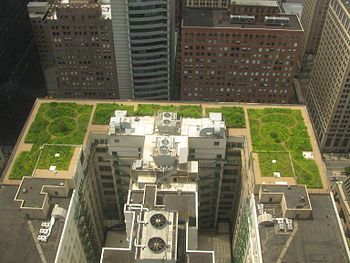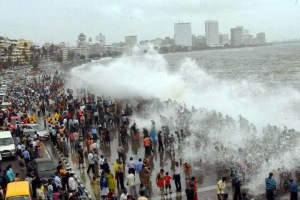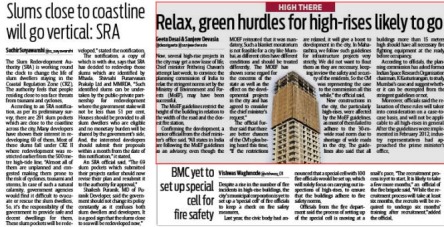While the World once more goes through the motion of conferences and sage advises. As it does every year on World Environment day,the mitigation actions which this day needs to usher in are not moving at the desired speed.
By this I don’t mean to insult the hard work being put by many a sincere person and organization. But the fantastic delusion the believers have about the method in which to approach saving the environment. Frankly speaking I don’t have a clue on what real change in the ground I’ve been able to make, since my becoming a “believer”.
Take for example emails. I believe in EMAILs. They are environmentally friendly so to speak. For every time I blog or write an email, I save a tree in the virgin forest from being cut down…..
A thought I always held until yesterday, while going through the routine motion of reading the newspaper it occurred to me that, every email I send almost all are printed on the other end by the receiver.
Can you ever imagine a top CEO, not walking into his office with his secretary scurrying behind with a ream of printed emails, in order of importance! On which the CEO has to physically sign as stamp of approval or comment upon. Prima facie there is nothing wrong about it. In fact the legal department could quote you chapter and verse as to why a physical signature is so important.
My question therefore, is a simple one. Why do we say that emails are environmentally safer? For with my limited knowledge and logical thinking, the World is deluding itself through these large conferences, packed with VVIP’s; all talking about saving the World. Talking without changing the simple ground realities.
While we rip open the heart of the Planet to extract coal, the wound of an opencast mine and the pollution accompanying it would dirty the shiny shoes and bring sweat in the brows; surely annoy the important CEO who needs the power generated by coal to run his laptop so that he can send out that all important missive, in the environmentally friendly way of E-mails which would then be printed on paper by the secretary of the receiver…..
So what do we learn when we see this video of UNEP?
That to create this very video we have simply contributed in destroying the planet a little bit more. For we need to use the very resources and tools which the large corporates have been manufacturing to achieve this message of saving this planet. And this cardinal truth is very well understood by the corporates and their backers. Unless that changes, unless we learn to live our lives in a completely different way it would not be possible to halt the advance of Global Warming!
So do we have hope ? Of course we do. Humans till date have always shown a pragmatic approach to problems. And solutions have been found. And to find the solutions we need to step up the awareness campaign. We have to keep promoting the cause. We have to make the general public aware of the reasons and patterns of the problem at hand. This is when we shall see real changes.
This is already happening in India. Take for example the recent articles given below
South, central & airport areas are Mumbai‘s hottest
Vaishnavi Chandrashekhar –Mumbai Times News Network
Temperatures Vary By Up To 13°C Within City
Mumbai’s warmest neighbourhoods lie in densely built-up south and central Mumbai and the industrial east, according to new research from IIT-Bombay on the urban heat island effect in the city.Areas around the airport, including Andheri East and Kurla, are also among the city’s hottest zones.
 Mumbai Heat Island Effect Surface temperatures in these “heat islands“ may be as much as 8-9 degrees Celsius higher than other parts of the city during the summer, and more than 10°C higher than green areas like the Sanjay Gandhi National Park, says a study by Aparna Dwivedi, MV Khire and B K Mohan at IIT-Bombay’s Centre for Studies in Resources Engineering.In winter, this temperature difference comes down to 4°C. (read more)
Mumbai Heat Island Effect Surface temperatures in these “heat islands“ may be as much as 8-9 degrees Celsius higher than other parts of the city during the summer, and more than 10°C higher than green areas like the Sanjay Gandhi National Park, says a study by Aparna Dwivedi, MV Khire and B K Mohan at IIT-Bombay’s Centre for Studies in Resources Engineering.In winter, this temperature difference comes down to 4°C. (read more)
The most important paragraphs were in the followup article, mentioning the use of materials for construction…
Land Use Norms Should Also List Materials For Construction
The `urban heat island effect’ is more widespread in the island city as it is more densely built and does not have a national park or adequate wetlands to bring down temperatures, says a recent study .
The “urban heat island (UHI) effect“ refers to the way in which cities become warmer than surrounding rural areas as temperatures are raised by heat-absorbing concrete and asphalt, high population densities, and pollution. The same factors make some urban neighborhoods warmer than others. The study , by Aparna Dwivedi, M V Khire and B K Mohan from IIT-Bombay’s Centre for Studies in Resources Engineering, says Mumbai’s proximity to the sea and exploding urbanization make it highly vulnerable to disasters of climate change.
“Land use guidelines need to be put in place and may also specify the use of materials which bring sustainable development and less UHI effect to Mumbai,“ the authors write in their study . In recent years, studies have found that pollution and the heat island effect may be contributing to a link between urbanization and thunderstorms in cities, including in Mumbai.
This research, part of an ongoing project, has implications for the current debate over the city’s new development plan. Allowing large increases in built-up areas in already dense areas could aggravate the heat island effect, unless planned properly , says Khire. “Some areas would become like an oven,“ he says.
Dwivedi, an architect and doctoral student working under the guidance of Khire, is studying the growth in heat islands in the city in the past 15 years. “The idea is to look at what factors, from building materials and green cover to pollution and energy use most affect temperatures, and come up with mitigation measures,“ she says. Some kinds of glass, for example, emit more heat than others. Also, glass buildings require air-conditioning, which emits its own heat, reinforcing the heat island effect, notes Khire.(read more).
The same page also carried articles of how pollution affects the heart and the dangerously low supply of water to the city.For an average person a newspaper article has more importance and they view it more seriously than when they hear the same thing from an expert in an conference. It is perhaps because the message reaches to a larger section of the audience, whom the reader knows and can discuss with. While in a conference of Environment and related field only the deeply committed and from the industry would visit; therefore highlighting once more the role of media.
All the stake holders in the UNFCCC conference keep seeking to agree upon actions which will limit the average global temperature increase to 2 degrees Celsius. This could need reductions in greenhouse gases to between 40 to 70 percent below 2010 levels by 2050, and we’re not even close. We know the UNFCCC is meeting in Paris this year December and UNEP in this month is conducting a seminar in Paris. The usual suspects would be there. But what about the public? Somewhere the UN has failed to raise the awareness level of the public. And it is this failure to create a mass movement of some of the actions the public around the world do take, will surely and steadily lead us to doom.
If one would have followed the news papers in India, Mumbai. In the past few months there has been some very vocal actions taken against destruction of forest and forest land. An area called Aaerey Colony which borders the Sanjay Gandhi National Park, was earmarked for creating the Car shed of Mumbai Metro.
While an estimated 9.2 crore commuters ( 10 Crore = 100 million) have already used the Metro since its inauguration last June, the expansion plans have been thwarted due to the opposition of creating the car-shed.
This is a classic example which the Politicians and Administrators must look at and understand where the program of abate Global warming is failing. On one hand the public wants to have better commuting system. And metro is the way towards the “Smart Cities”, but not at the cost of the Environment.
The Public at large while wanting to live within the modern trappings of City, also want to live in the lap of Nature; as have the ancestors of humans been doing for Centuries. This is the dilemma one has to address. And this can’t be addressed by taking baby steps but strong measures. True there could be a massive socio-political churning, at some parts of the world more acute than in other. But mistakes can’t be cured without pain.
To begin with lets look at some of the agenda the World We Want 2015 should be addressing.
1. Stop manufacturing cars that use Fossil fuel.
2. Insist to member Nations to not allow more than 1 car per family, even if they run on alternative fuel.
3. Promote public transport like Trams and Trains. Electric Bus are a limited option, to be used as shuttle to bring in people to the train and tram terminals.
4. Insist on making all buildings with roof-top Solar. Land is a major issue, beyond a point one will not get land to install utility scale Solar. And its not exactly great idea when the power anyway will be wheeled to the cities. All rural areas too should have solar roof-tops. Design Solar Trees along high-ways. While this will not exactly provide enough power to run the Nation, it would surely limit the use and extraction of Coal & Oil.
We need coal & oil, till the Nuclear fusion takes over or some other better form yet to be discovered. We may perhaps find a way to tap into the limitless Geothermal Energy even in areas where we don’t have the hot-spot. That would perhaps help.
5. To make it mandatory for every residential building to grow food. If every block is made to grow food, say each building grows something different, the community market would be able to augment more fresh food while at the same time reduce the pressure on farm lands to ever keep growing into the last remaining virgin forests or using pesticides.
Architects must be mandated to design by law areas within the building, for growing food and at the same time Renewable Energy. Rain-water harvesting goes naturally with this.
6. The most important part is to have mandatory laws which make “walk to work” a reality. Unless this part is achieved, the above 5 will not make sense. And this can be achieved easily by creating some pure business districts within the precinct and some mixed used buildings.
India is poised to build 100 Smart cities and retrofit 500 more. The idea of having a Wi-Fi city or some transport system tied to surveillance cameras don’t make the city smart. Neither building Climate unresponsive glass buildings, by blindly aping the west.
Do we ever question about why we keep providing licence for manufacture & sale of Loudspeakers, while at the same time we all get so annoyed with the blaring of horn and loud music ?
War & Peace can’t be in the same space, except in the famous fictitious book….
Our cities and the country can only be in sync with the environment when we start with being human. Rest will fall in place.
Come this year lets start making the Environment more conducive to usher in the Environment Day to come.










































 The last time I went into a cement &
The last time I went into a cement & 












 May 6, 2013, 7:25 AM:
May 6, 2013, 7:25 AM:  The heavy rains that have been inundating the city of Mumbai and it surrounding regions time and again during the monsoons every year indicate that the city is still short of a sound flood mitigation framework. The existing efforts by the city’s governing and planning authorities towards formulating flood alleviation strategies have only been marginally successful in fulfilling their purpose. Moreover, the national disaster management framework released in the year 2004 takes a holistic approach at managing and reducing disasters by suggesting general policies applicable to all the states in the country and not just the Mumbai region in particular. The framework also considers floods only as one of the many natural disasters that it suggests strategies for. It does not provide any flood-specific mitigation strategies so to speak of. (
The heavy rains that have been inundating the city of Mumbai and it surrounding regions time and again during the monsoons every year indicate that the city is still short of a sound flood mitigation framework. The existing efforts by the city’s governing and planning authorities towards formulating flood alleviation strategies have only been marginally successful in fulfilling their purpose. Moreover, the national disaster management framework released in the year 2004 takes a holistic approach at managing and reducing disasters by suggesting general policies applicable to all the states in the country and not just the Mumbai region in particular. The framework also considers floods only as one of the many natural disasters that it suggests strategies for. It does not provide any flood-specific mitigation strategies so to speak of. (































You must be logged in to post a comment.